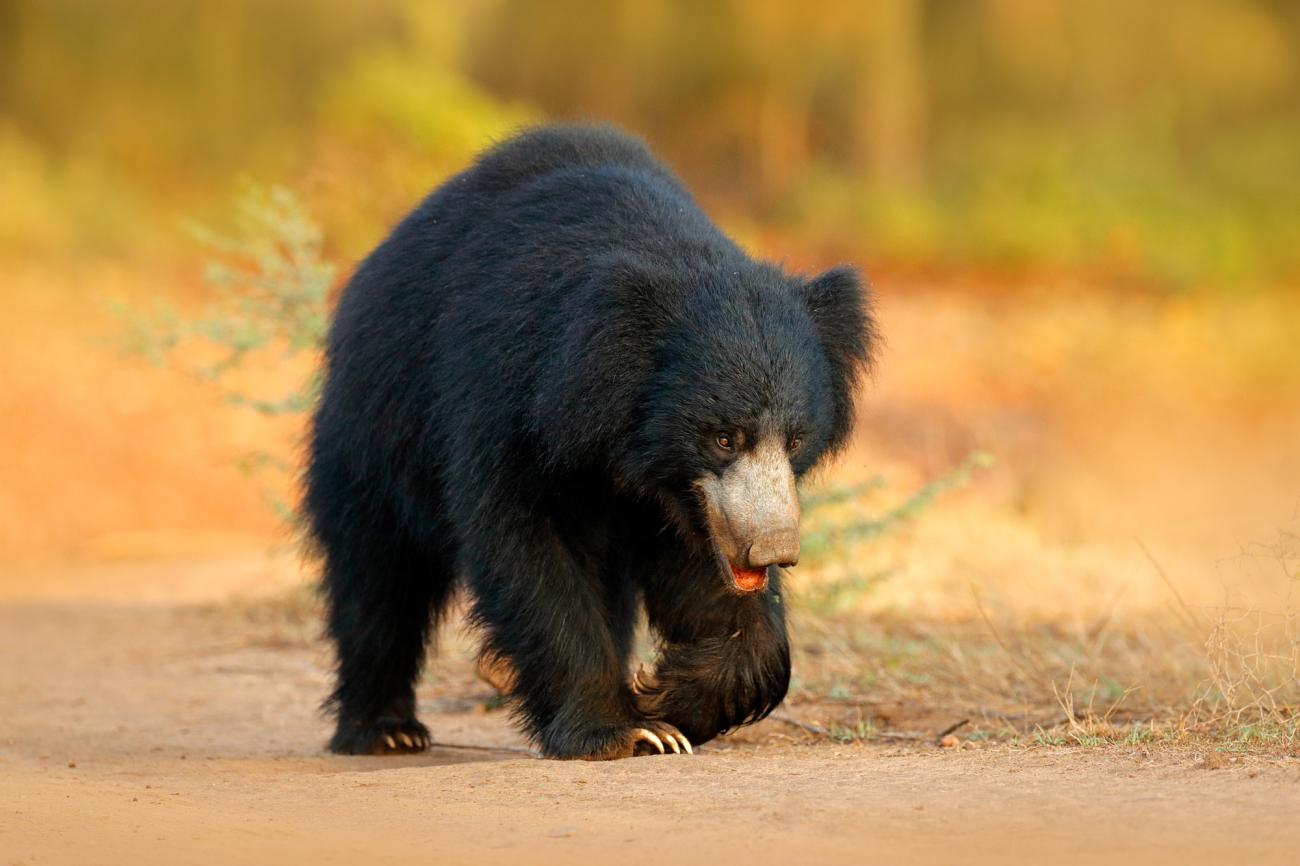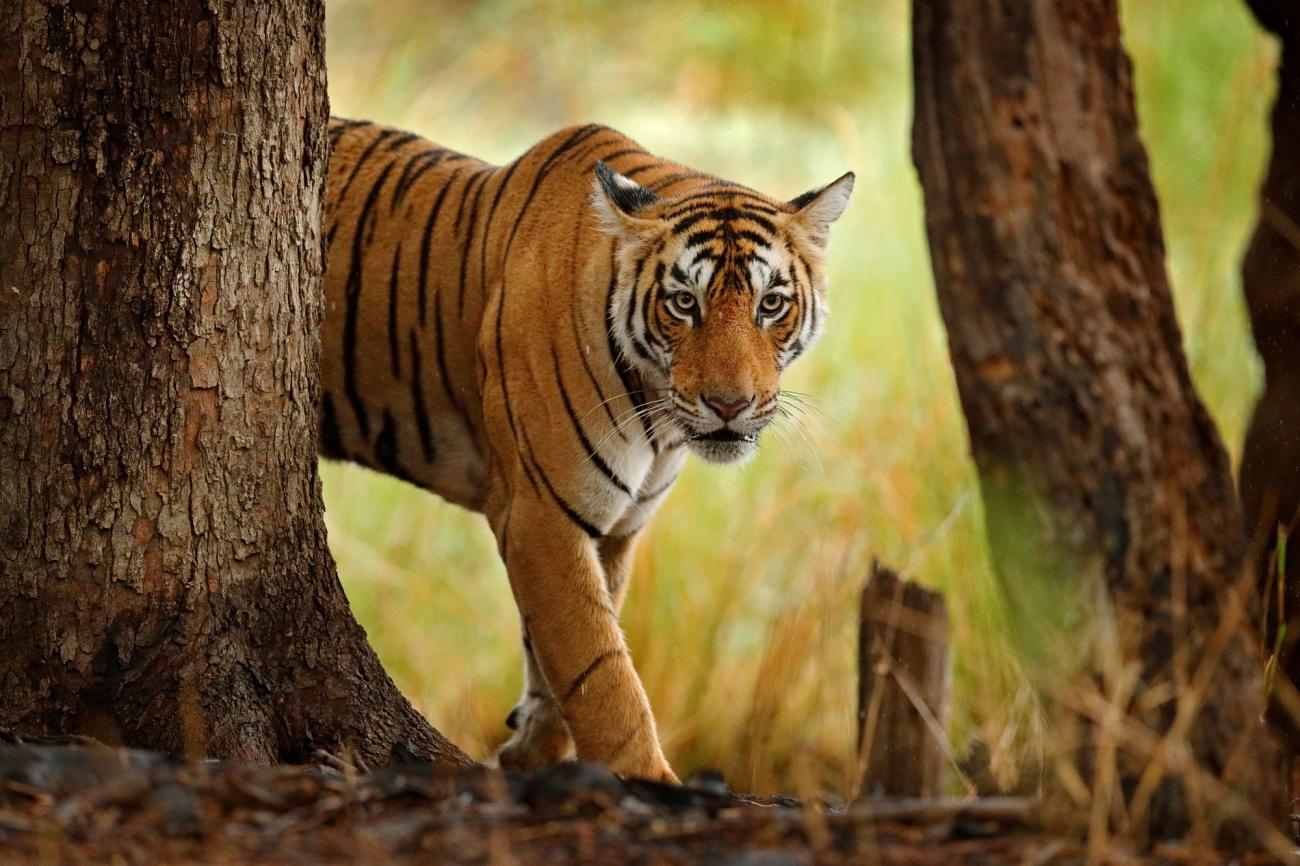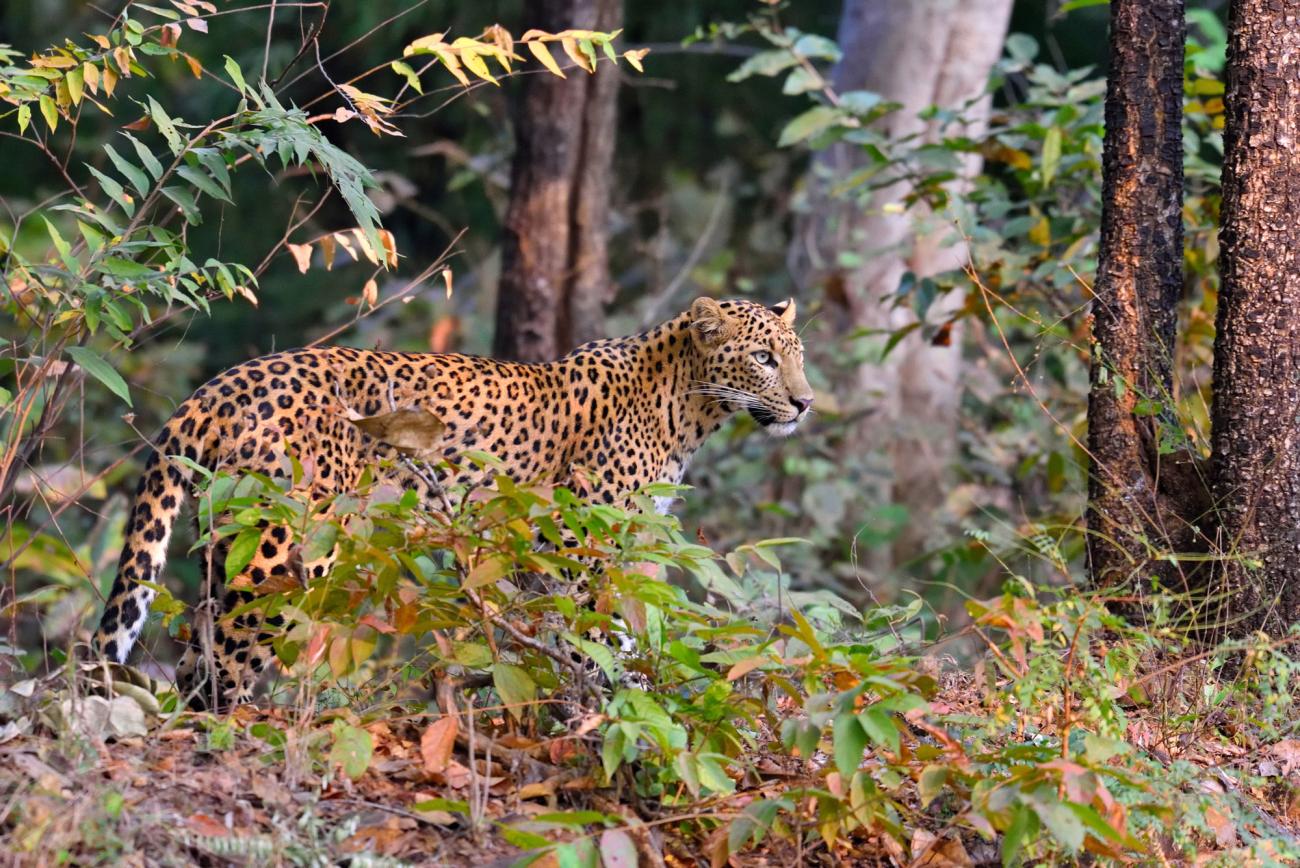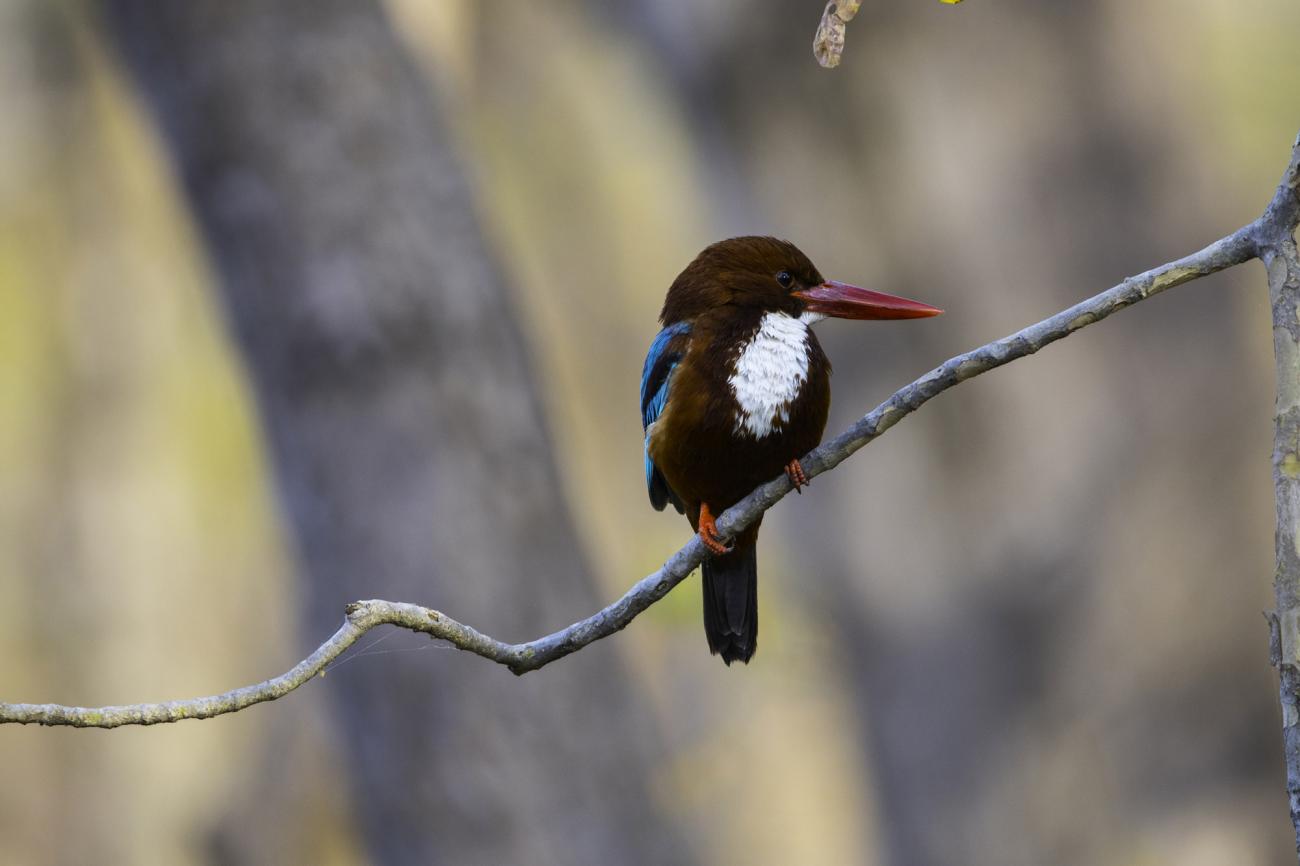India Safaris
Overview
If you are looking to embark on an enchanting odyssey through the heart of India, venturing through the wilderness and getting up close and personal with Bengal tigers, herds of wild elephant, and leopards, our India safari experiences will ensure you hear the awe-inspiring roars and witness the elusive graceful dances of creatures of all walks of life. An immersive exploration into the depths of India's natural wonders, travellers old, young, experienced, and novice can witness the magic of a safari in India.
If you are looking for an amazing wildlife tour in India, you will get an opportunity for adventure, learning, and rejuvenation. For those people looking for something more than a backpacker’s holiday or a few days out of town, but really want something holistic, immersive, and exciting…
If you are looking to embark on an enchanting odyssey through the heart of India, venturing through the wilderness and getting up close and personal with Bengal tigers, herds of wild elephant, and leopards, our India safari experiences will ensure you hear the awe-inspiring roars and witness the elusive graceful dances of creatures of all walks of life. An immersive exploration into the depths of India's natural wonders, travellers old, young, experienced, and novice can witness the magic of a safari in India.
If you are looking for an amazing wildlife tour in India, you will get an opportunity for adventure, learning, and rejuvenation. For those people looking for something more than a backpacker’s holiday or a few days out of town, but really want something holistic, immersive, and exciting, our opportunities for safari in India will give you a lot of food for thought. You will get a mental break from urban life, improving your strength and physical stamina in the process, and of course, be up close and personal with the diverse nature, wildlife, flora, and fauna that offers a whole host of deeper connections.
As we traverse the diverse landscapes and see a tapestry of ecosystems, we guarantee encounters with the untamed beauty of India's national parks. From the grandeur of Ranthambore National Park to the richness of the Tadoba Andhari Tiger Reserve, each safari in India will captivate, thrill, and inspire you in every single way. Let's show you the untamed beauty that awaits you.
Start your journey
Example Safari Itineraries
Our Favourite Safari Locations
KANHA NATIONAL PARK
Based in the Maikal mountain range of Satpuras in Madhya Pradesh, also home to the Pench National Park and Bandhavgarh National Parks, Kanha National Park is a destination celebrated for its high density of tigers. Covering an area of 940 square kilometres, this national park is most notable in popular culture for being mentioned in Rudyard Kipling's The Jungle Book. For anybody familiar with the story but have never seen this national park, you can get an idea of what to expect: a captivating blend of picturesque landscapes, diverse ecosystems, and a lot of wildlife!
Kanha is renowned for its density. With tall trees that grow up to a height of 100 feet (approximately 30 metres), thick bamboo forests, and lush green fields of tall grass, there is so much to explore. Home to a wide variety of wildlife, you can expect to see leopards, a variety of birds, wild dogs, and barasingha deer, also known as the swamp deer.
Known for its distinctive antlers, the name "barasingha" has Hindi origin and means “12-antlered deer,” it is a highly sociable deer and is listed as an endangered species. In fact, Kanha played a key role in saving the barasingha from extinction through various conservation methods, increasing the population from about 60 to an estimated 800, making it the only place in the world where the barasingha swamp deer can be seen in the wild, and it's not uncommon for you to see herds of 10 to 20 deer roaming the fields and meadows of the park! And the watering holes add serenity to the vibrant jungle, creating the perfect positions to observe wildlife.
Kanha National Park provides an unforgettable tiger safari in India.
TADOBA NATIONAL PARK
Tadoba National Park, also known as the Tadoba Andhari Tiger Reserve, is the largest and oldest national park in Maharashtra and is spread across 626 square kilometres in the Chandrapur district, approximately 150 kilometres from Nagpur, the third-largest city in the state.
This park showcases the rich biodiversity of the region in all of its glory. The dense woodlands are home to a variety of wildlife, including a diverse bird population, crocodiles, sloths, leopards, and the majestic tiger. The lush flora alone is dominated by a variety of mango, mahua, bamboo, teak, and sal trees, offering a perfect picturesque setting for your safari exploration.
It is a prime opportunity to witness the iconic Indian bison known as gaurs, the largest extant bovine known for its massive build, strong stature, and distinctive high grey ridge on its forehead between the horns. A relative of domestic cattle, the gaur is a prominent and iconic species in this location with the distinct characteristic of using high whistles to warn other members of the herd of approaching danger.
With a history dating back to 184 BC, Tadoba is an intriguing mixture of culture, mythology, and nature, which only adds to its allure. A rich amalgamation of culture, mythology, and nature with many historical landmarks in the forest landscape, it is a great place to observe wildlife, flora, and its rich biodiversity.
RANTHAMBORE NATIONAL PARK
Ranthambore National Park is situated about 14 kilometres from the Sawai Madhopur district of eastern Rajasthan and is a renowned wildlife destination known for its diverse flora and fauna. Named after the historic Ranthambore Fort located within its boundaries, this park boasts a rich history dating back to the year 1955 when it was established as the Sawai Madhopur Game Sanctuary. It was declared a national park in 1980 after becoming a Project Tiger reserve in 1973 with the aim of protecting the endangered Bengal tigers.
The park covers approximately 1,334 square kilometres and is characterised by the largest stretch of Anogeissus pendula (Dhok) forest in the whole of India. Ranthambore is home to a variety of wildlife, including Bengal tigers, hyenas, leopards, sloth bears, crocodiles, and over 300 species of birds. The lush flora includes 539 species of flowering plants that create a beautiful backdrop for your safari adventure.
While notably smaller in comparison to other reserves, this only increases the chances of tiger sightings, making it a prime location for tiger safaris in India, and Reni Pani, a popular wildlife lodge, provides an amazing base to explore all the wonders Ranthambore has to offer. An amazing blend of history, nature, and wildlife, it is a must-visit destination for wildlife lovers and nature enthusiasts alike.
SATPURA NATIONAL PARK
Satpura National Park, based in the Satpura Range of Hoshangabad district in Madhya Pradesh, is a testament to India's ongoing commitment to preserving diverse ecosystems. Covering a vast area of 1,427 square kilometres, Satpura National Park is known for its rugged terrain, deep valleys, sandstone peaks, and a huge network of rivers and rivulets.
In addition to its wonderful scenery, it's home to a huge variety of wildlife, including mammals such as sloth bears, wild boars, spotted deer, porcupines, smooth otters, and Indian giant squirrels, as well as over 300 species of birds and reptiles, including various species of snakes, marsh crocodiles, turtles, and Indian chameleons. And as the park's diverse flora features trees such as sal, teak, bamboo, and various medicinal plants, Satpura National Park has a stunning biodiversity on offer and is a veritable paradise for wildlife enthusiasts.
With a variety of options for safari on foot, in vehicles, as well as on elephant and boat safaris, allow visitors to explore the park's diverse terrain in the way they see fit, and the park's water sources, such as the Denwa River, create picturesque scenes and natural gathering spots for wildlife.
Satpura provides unique sightings all year round, with the summers being fantastic for seeing wildlife in their habitat, with winters also boasting their own mystical charm too! The peak times to visit are between the months of October and June, offering a serene and naturally spoiled environment to explore.
RANTHAMBORE NATIONAL PARK

Ranthambore National Park is situated about 14 kilometres from the Sawai Madhopur district of eastern Rajasthan and is a renowned wildlife destination known for its diverse flora and fauna. Named after the historic Ranthambore Fort located within its boundaries, this park boasts a rich history dating back to the year 1955 when it was established as the Sawai Madhopur Game Sanctuary. It was declared a national park in 1980 after becoming a Project Tiger reserve in 1973 with the aim of protecting the endangered Bengal tigers.
The park covers approximately 1,334 square kilometres and is characterised by the largest stretch of Anogeissus pendula (Dhok) forest in the whole of India. Ranthambore is home to a variety of wildlife, including Bengal tigers, hyenas, leopards, sloth bears, crocodiles, and over 300 species of birds. The lush flora includes 539 species of flowering plants that create a beautiful backdrop for your safari adventure.
While notably smaller in comparison to other reserves, this only increases the chances of tiger sightings, making it a prime location for tiger safaris in India, and Reni Pani, a popular wildlife lodge, provides an amazing base to explore all the wonders Ranthambore has to offer. An amazing blend of history, nature, and wildlife, it is a must-visit destination for wildlife lovers and nature enthusiasts alike.
KANHA NATIONAL PARK

Based in the Maikal mountain range of Satpuras in Madhya Pradesh, also home to the Pench National Park and Bandhavgarh National Parks, Kanha National Park is a destination celebrated for its high density of tigers. Covering an area of 940 square kilometres, this national park is most notable in popular culture for being mentioned in Rudyard Kipling's The Jungle Book. For anybody familiar with the story but have never seen this national park, you can get an idea of what to expect: a captivating blend of picturesque landscapes, diverse ecosystems, and a lot of wildlife!
Kanha is renowned for its density. With tall trees that grow up to a height of 100 feet (approximately 30 metres), thick bamboo forests, and lush green fields of tall grass, there is so much to explore. Home to a wide variety of wildlife, you can expect to see leopards, a variety of birds, wild dogs, and barasingha deer, also known as the swamp deer.
Known for its distinctive antlers, the name "barasingha" has Hindi origin and means “12-antlered deer,” it is a highly sociable deer and is listed as an endangered species. In fact, Kanha played a key role in saving the barasingha from extinction through various conservation methods, increasing the population from about 60 to an estimated 800, making it the only place in the world where the barasingha swamp deer can be seen in the wild, and it's not uncommon for you to see herds of 10 to 20 deer roaming the fields and meadows of the park! And the watering holes add serenity to the vibrant jungle, creating the perfect positions to observe wildlife.
Kanha National Park provides an unforgettable tiger safari in India.
TADOBA NATIONAL PARK

Tadoba National Park, also known as the Tadoba Andhari Tiger Reserve, is the largest and oldest national park in Maharashtra and is spread across 626 square kilometres in the Chandrapur district, approximately 150 kilometres from Nagpur, the third-largest city in the state.
This park showcases the rich biodiversity of the region in all of its glory. The dense woodlands are home to a variety of wildlife, including a diverse bird population, crocodiles, sloths, leopards, and the majestic tiger. The lush flora alone is dominated by a variety of mango, mahua, bamboo, teak, and sal trees, offering a perfect picturesque setting for your safari exploration.
It is a prime opportunity to witness the iconic Indian bison known as gaurs, the largest extant bovine known for its massive build, strong stature, and distinctive high grey ridge on its forehead between the horns. A relative of domestic cattle, the gaur is a prominent and iconic species in this location with the distinct characteristic of using high whistles to warn other members of the herd of approaching danger.
With a history dating back to 184 BC, Tadoba is an intriguing mixture of culture, mythology, and nature, which only adds to its allure. A rich amalgamation of culture, mythology, and nature with many historical landmarks in the forest landscape, it is a great place to observe wildlife, flora, and its rich biodiversity.
SATPURA NATIONAL PARK

Satpura National Park, based in the Satpura Range of Hoshangabad district in Madhya Pradesh, is a testament to India's ongoing commitment to preserving diverse ecosystems. Covering a vast area of 1,427 square kilometres, Satpura National Park is known for its rugged terrain, deep valleys, sandstone peaks, and a huge network of rivers and rivulets.
In addition to its wonderful scenery, it's home to a huge variety of wildlife, including mammals such as sloth bears, wild boars, spotted deer, porcupines, smooth otters, and Indian giant squirrels, as well as over 300 species of birds and reptiles, including various species of snakes, marsh crocodiles, turtles, and Indian chameleons. And as the park's diverse flora features trees such as sal, teak, bamboo, and various medicinal plants, Satpura National Park has a stunning biodiversity on offer and is a veritable paradise for wildlife enthusiasts.
With a variety of options for safari on foot, in vehicles, as well as on elephant and boat safaris, allow visitors to explore the park's diverse terrain in the way they see fit, and the park's water sources, such as the Denwa River, create picturesque scenes and natural gathering spots for wildlife.
Satpura provides unique sightings all year round, with the summers being fantastic for seeing wildlife in their habitat, with winters also boasting their own mystical charm too! The peak times to visit are between the months of October and June, offering a serene and naturally spoiled environment to explore.
START PLANNING YOUR TRIP
Our team of experts have a wealth of knowledge and experience to help you plan your adventure of a lifetime.
